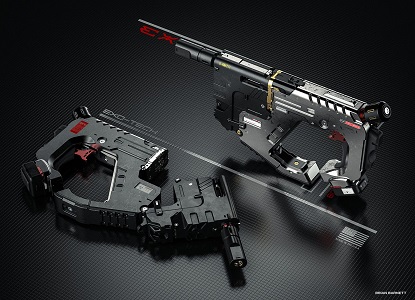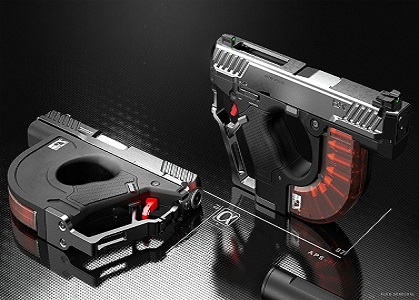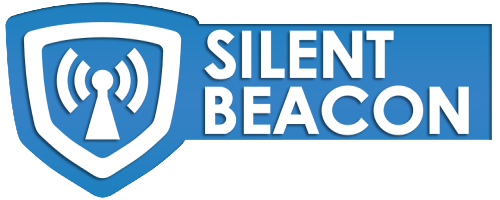X-PRO Arms Product Development Service
Product development is a series of steps that includes the conceptualization, design, development and marketing of newly created or newly rebranded goods or services.

Product development frameworks
Although product development is creative, the discipline requires a systematic approach to guide the processes that are required to get a new product to market. Here at Arms Industries, we provide guidance about selecting the best development framework of firearm for a new product or service. A framework of firearm helps structure the actual product development.Some frameworks, like the fuzzy front end (FFE) approach, define what steps should be followed, but leave it up to our team to decide which order makes the most sense for the specific product that is being developed.


FIVE ELEMENTS OF FFE PRODUCT DEVELOPMENT
- Identification of design criteria: involves brainstorming possible new products. Once an idea has been identified as a prospective product, a more formal product development strategy can be applied.
- Idea analysis: involves a closer evaluation of the product concept. Market research and concept studies are undertaken to determine if the idea is feasible or within a relevant business context to the company or to the consumer.
- Concept genesis: involves turning an identified product opportunity into a tangible concept.
- Prototyping: involves creating a rapid prototype for a product concept that has been determined to have business relevance and value. Prototyping in this front-end context means a “quick-and-dirty” model is created, rather than the refined product model that will be tested and marketed later on.
- Product development: involves ensuring the concept is viable and has been determined to make business sense and have business value.
FIVE COMPONENTS OF DESIGN STRATEGY
- Empathize: Learn more about the problem from multiple perspectives.
- Define: Identify the scope and true nature of the problem.
- Ideate: Brainstorm solutions to the problem.
- Prototype: Eliminate unworkable or impractical solutions.
- Test: Solicit feedback.
The objective of product development is to cultivate, maintain and increase a company’s market share by satisfying a consumer demand. Not every product will appeal to every customer or client base, so defining the target market for a product is a critical component that must take place early in the product development process. Quantitative market research should be conducted at all phases of the design process, including before the product or service is conceived, while the product is being designed and after the product has been launched.

The Project Flow

1. Tell us about your project
Describe your project, estimate the number of hours needed, the duration, and software requirements.

2. Pre-qualified expert freelancer
One of our engineers will contact you to discuss your project and gather more details.

3. Deposit & work
Agreement will need to be signed and payment deposit made in order to begin a project.
Eight stages of new product development
This composite new product development (NPD) framework for manufactured goods has eight important components:
Idea generation: is the continuous and systematic quest for new product opportunities, including updating or changing an existing product. The goal is to generate ideas for new products or services or, improvements to products or services that address a gap in the market.
Idea screening: takes the less attractive, infeasible and unwanted product ideas out of the running. Unsuitable ideas should be determined through objective consideration, including through early testing and feedback with consumers.
Concept development and testing: is vital. The internal, objective analysis of step two is replaced by customer opinion in this stage. The idea, or product concept at this point, must be tested on a true customer base. The testers’ reactions can then be leveraged to adjust and further develop the concept according to the feedback. One example of concept development is the concept cars developed by car manufacturers. These prototypes are made of clay and shown at auto shows for consumer feedback.
Market strategy/business analysis identifies the strategy of how to optimally market and sell your product or service. It is comprised of four P’s, which are product, price, promotion and placement.
Product: The service or good that’s been designed to satisfy the demand of a target audience.
Price: Pricing decisions affect everything; profit margins, supply and demand, and market strategy.
Promotion: The goals of promotion are to present the product to the target audience, increasing demand by doing so, and to illustrate the value of the product. Promotion includes advertisements, public relations and marketing campaigns.
Placement: The transaction may not occur on the web, but in today’s digital economy, the customer is generally engaged and converted on the Internet. Whether the product will be provided in bricks-and-mortar or clicks-and-mortar shops, or available through an omnichannel approach, the optimal channel, or channels, for placement must be determined if the targeted potential customers are to become actual customers.
Feasibility analysis/study: yields information that is critical to the product’s success. It entails organizing private groups that will test a beta version, or prototype, of the product, then evaluate the experience in a test panel. This feedback communicates the target market’s level of interest and desired product features, as well as determines whether the product in development has the potential to be profitable, attainable and viable for the company, while satisfying a real demand from the target market.
Questions to be answered during analysis include:
- Do you have the labor and materials required?
- What is the price of production, delivery and promotion?
- Do you have access to the right distribution channels?
Product technical design/Product development integrates the results of the feasibility analyses and feedback from beta tests from stage five into the product. This stage consists of turning that prototype or concept into a workable market offering; ironing out the technicalities of the product; and alerting and organizing the departments involved with the product launch, such as research and development, finance, marketing, production or operations.
Test marketing, or market testing, differs from concept or beta testing in that the prototype product and whole proposed marketing plan, not individual segments, are evaluated. The goal of this stage is to validate the entire concept, from marketing angle and message to packaging to advertising to distribution. Test marketing is often performed by offering your product to a random sample of your target market. By testing the entire package before launch, the company can critically review the reception of the product before a full go-to-market investment is made.
Market entry/commercialization is the stage in which the product is introduced to the target market. All the data obtained throughout the previous seven stages of this approach are used to produce, market and distribute the final product to and through the appropriate channels. The product is now available to everyone and the product lifecycle begins. The life of the product is shaped by the reception of the target market, the competition and subsequent enhancements to the product offering.
Product development is an always-evolving and fluid process, and just as some steps will change, depending on the nature of the project, so will the person who manages product development. In some organizations, there is a dedicated team that researches and tests new products. Some smaller organizations may outsource their new product development to a design team. In midsize organizations, the product manager is often the person in charge of product development, and he or she may be part of the marketing team, while tech shops selling business-to-business products and services that have very technical requirements may have their product managers report to engineering. Regardless of what framework is used and who is in charge of new product development, the new part is just one aspect of the entire product lifecycle management.

How Can X-Pro Help With My Project?
X-Pro helps clients with one-time and ongoing project needs. Our specialties include 3D modeling, 3D design, CAD drafting, 3D animation, engineering and 3D renderings, 3D industrial design, prototype design, 3D printing design, mechanical design, architectural design, structural design, 3D interior design, and CAD landscaping design services.
Our CAD designers and drafting contractors work with AutoCAD, SolidWorks, Autodesk Inventor, Maya, 3ds Max, CATIA and many other types of software. Submit your project description and work with a pre-qualified 3D artist, CAD designer, drafter, 3D modeler, 3D animation or engineer specialized for your project needs.
FAQ for your new project
Why X-Pro?
We connect you with the best designers in the business, and we offer the most comprehensive set of services for inventors you’ll find anywhere. We take the guesswork out of online design services, and let you focus on what’s important.
How do private projects work?
Simple. Just send us a project brief and we will provide you with a design quote from a pre-qualified designer for your project.
Who can see my project?
Private projects are entirely confidential. Only you and the designer that you will be working with will see your project description, file attachments and submitted work.
Do I own the designs & IP?
Yes. Our legally binding terms of service assign the ownership of intellectual property (IP) from the designer to the service buyer for any paid designs.
Do you offer manufacturing services?
Yes we do! We offer a range of manufacturing services, including 3D printing, rapid manufacturing and conventional injection molding.
How is a design project different from hourly services?
Design projects are limited-term projects with a concrete budget, based on an upfront quote from the CAD designer. Hourly services are for ongoing work that generally have an open work scope.
Will designers sign a NDA?
We’ve got this covered. Our legally binding terms of service covers freelancer non-disclosure. Freelancers on X-Pro have agreed to and are bound by the terms of non-disclosure that are outlined in our terms of service.
Got a question? Get in touch
We’re here to help. Send us an email or get a personalized quote.
WE ARE HERE FOR YOU
24 Hours a day
7 days a week
365 days a year
FOLLOW US
JOIN OUR NEWSLETTER
*By subscribing you agree to receive SMS notifications from X-PRO CAD. Reply HELP for help, STOP to unsubscribe.



















